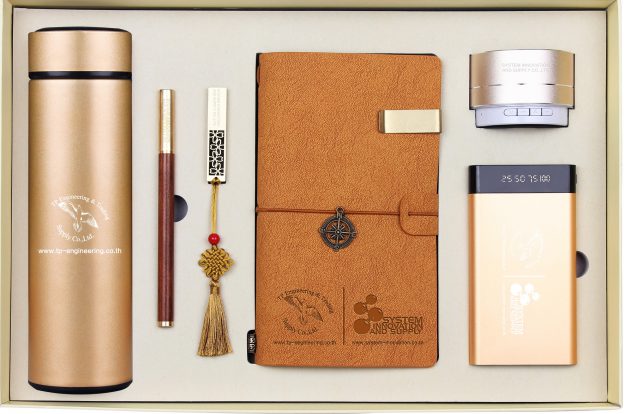ทำไมต้องใช้ไมค์ลอย มีข้อดีและข้อเสีย แตกต่างกันอย่างไร
ในปัจจุบันนี้เราจะพบเห็นไมโครโฟนที่มีลักษณะแตกต่างกันออกไปแต่จะยกตัวอย่างในการเปรียบเทียบหาข้อดีและข้อเสียระหว่างไมค์ลอยกับไมโครโฟนแบบมีสายนั้นจะมีข้อดีและข้อเสียแตกต่างกันอย่างไร ซึ่งไมค์หรือไมโครโฟนที่ใช้กับงานประชุม งานร้องเพลง หรือแม้กระทั่งงานสังสรรค์สัมมนาต่างๆ แนนร้องเพลงในคอนเสิร์ตแสดงสด ล้วนก็ต่างใช้ไมโครโฟนในการทำงาน และเราก็จะมาทำความเข้าใจว่าไมโครโฟนจะแบ่งออกเป็น 2 ประเภท ได้แก่ไมโครโฟนแบบ Dynamic และไมโครโฟน แบบคอนเดนเซอร์ ซึ่งไมโครโฟนทั้ง 2 ประเภทนี้ต่างก็ใช้ในไมโครโฟนทั้งแบบมีสายและไมค์ลอยด้วยเช่นกัน
หากพูดถึงการใช้งานสำหรับผู้เริ่มต้นหรือมือใหม่ จะสามารถเริ่มต้นใช้งานจากสิ่งที่ง่ายๆก่อนด้วยการใช้งานไมค์แบบมีสายซึ่งจะเป็นอะไรที่เหมาะสมกว่า นั่นก็เพราะว่าใหม่แบบมีสายสามารถนำแจ็คสายสัญญาณไปเสียบเข้ากับระบบอินพุตของเครื่องเสียงเช่นมิกเซอร์ หรือแอมป์ Power ก็สามารถใช้งานได้ตามความต้องการ ส่วนไมค์ลอยนั้นยังต้องอาศัยความชำนาญหรือความเข้าใจเกี่ยวกับการใช้งานพอสมควรเพราะมันจะมีความยุ่งยากซับซ้อนขึ้นมานั่นเอง นั่นก็เพราะว่า ต้องอาศัยอุปกรณ์ในการ ทำงาน เป็นจำนวนมาก เนี่ยหากผู้ใช้งาน ไม่มีความชำนาญ ก็จะทำให้เกิดปัญหายุ่งยากอีกต่อไป
เรามาดูกันว่า ประโยชน์และข้อดีของไมโครโฟนแบบไร้สายหรือไมค์ลอยจะมีอะไรบ้าง ดังนี้
ไมค์ลอย หรือไมโครโฟนแบบไร้สาย
ข้อดี คือ
- หลายราคาให้เลือกใช้ ตั้งแต่หลักพันจนไปถึงหลักแสน ขึ้นอยู่กับคุณภาพในการใช้งาน
- สามารถปรับเปลี่ยนช่องรับความถี่ และ setup ค่าต่างๆ ปรับลดหรือเพิ่มเสียงความดังได้
- ลดปัญหาการเกะกะจากสายไฟหรือสายไมค์ได้เป็นอย่างดี
- บ่งบอกถึงความทันสมัย ล้ำหน้าอนาคต
- มีให้เลือกใช้งานหลากหลายรูปแบบ และหลายประเภท
ข้อเสียคือ
- ต้องอาศัยไฟฟ้าจากแบตเตอรี่เพื่อเลี้ยงวงจร ในการทำงาน อาจทำให้เกิดปัญหา ต้องเปลี่ยนแบตเตอรี่ระหว่างการใช้งานด้วยเช่นกัน
- พบปัญหาของมีคลื่นแทรกหรือคลื่นรบกวน การขาดหายของสัญญาณซึ่งเป็นเรื่องปกติ หากอยู่ในจุดอับสัญญาณหรือมีสิ่งกีดขวางขนาดใหญ่กันอยู่
- จะต้องเสียเวลาในการขออนุญาตในการใช้ไม่ถูกต้องจาก กสทช. สำหรับผู้นำเข้าให้ถูกต้องตามกฎหมาย
- หากเปรียบเทียบรุ่นไมโครโฟนที่เป็น series เดียวกัน ไมค์ลอยจะมีราคาที่สูงกว่าไมค์แบบใช้สาย
- มีอุปกรณ์หลายชิ้นในการติดตั้งมากกว่าไมค์แบบใช้สาย
ทั้งหมดนี้ก็เป็นข้อดีและข้อเสียของไมค์ลอย หรือไมโครโฟนแบบไร้สาย ที่จะสามารถหาข้อเปรียบเทียบ ในการใช้งานของไมค์ลอยได้เป็นอย่างดี นอกจากนี้จึงทำให้ผู้ใช้งานได้มีความรู้เกี่ยวกับประเภทของไมโครโฟนระหว่างไมค์ลอยและไมโครโฟนแบบมีสาย ซึ่งผู้ใช้งานสามารถนำข้อมูลนี้ไปประกอบการตัดสินใจเลือกซื้อเลือกใช้ ชนิดและรุ่นของไมค์ลอยหรือไมโครโฟนแบบไร้สาย ได้แบบมืออาชีพ ด้วยเช่นกัน












